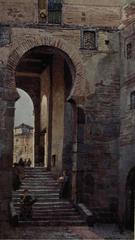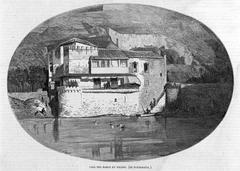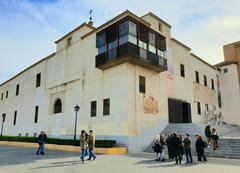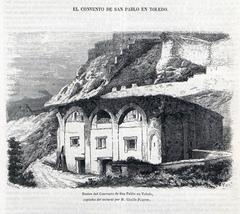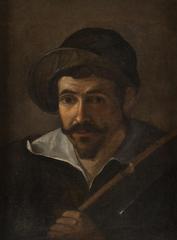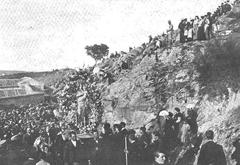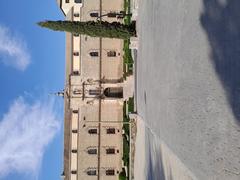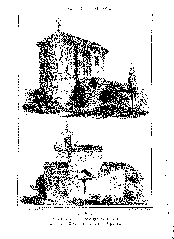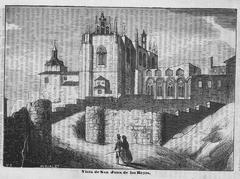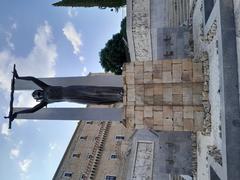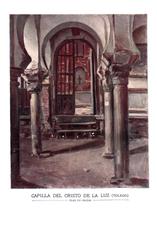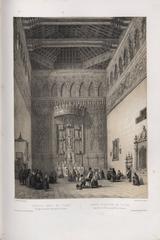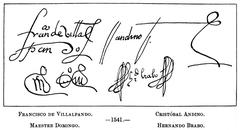Convento de San Clemente Toledo: Comprehensive Visiting Guide, Historical Background, and Cultural Highlights
Date: 04/07/2025
Introduction
Nestled in the heart of Toledo, Spain, the Convento de San Clemente stands as a testament to centuries of religious devotion, cultural exchange, and architectural innovation. Founded soon after the Christian Reconquista, this convent has evolved into an iconic destination, celebrated not only for its historical and artistic heritage but also for its living traditions, such as the famed Bernardas nuns’ marzipan. This guide offers a detailed overview of the convent’s history, architectural features, visitor information, and tips for making the most of your visit to one of Toledo’s most treasured landmarks (Declausura; Trek Zone; Cultura Castilla-La Mancha).
Table of Contents
- Historical Overview
- Monastic Tradition and Cultural Significance
- Architectural Highlights
- Visiting Information
- Accessibility and Visitor Experience
- Nearby Attractions
- Frequently Asked Questions (FAQ)
- Tips for a Memorable Visit
- Conclusion
- References
Historical Overview
Foundation and Royal Patronage
The Convento de San Clemente is among Toledo’s oldest monastic sites. Established in the late 11th or early 12th century, likely by King Alfonso VI of León and Castile, its creation coincided with the consolidation of Christian authority following the Reconquista. Initially located outside the city walls, the convent was later moved within the fortified city by Alfonso VII, earning the prestigious title of “Imperial Monastery” due to its close ties with the Castilian crown (Declausura).
Religious Evolution
Originally affiliated with the Cluniac order, the convent transitioned to the Cistercian rule in 1180, a shift that brought a renewed focus on austerity and manual labor, encapsulated in the monastic motto “Ora et labora” (pray and work). The Bernardas nuns, who continue to inhabit the convent, have preserved these traditions over the centuries (Declausura).
Historical Events and Endurance
The convent’s history is marked by periods of prosperity and adversity, including royal patronage, wars, and famines. According to local legend, the convent is credited as the birthplace of Toledo’s famous marzipan, invented by the nuns during a famine—a culinary tradition still maintained today (Toledo Spain Click).
Monastic Tradition and Cultural Significance
Beyond its spiritual role, the Convento de San Clemente became a center for education, charity, and social services. The nuns provided crucial care for the sick and poor, reinforcing the convent’s importance within Toledo’s community. The convent also served as a repository for sacred relics and liturgical objects, attracting pilgrims and playing a key part in the religious life of the city (Trek Zone).
Architectural Highlights
Evolution of Styles
The convent is a living record of Toledo’s multicultural history, with architectural features spanning Romanesque, Gothic, Mudéjar, Renaissance, and Baroque periods. The building’s structure is organized around two principal cloisters and several smaller patios, reflecting centuries of expansion and adaptation (Cultura Castilla-La Mancha; Conventos de Toledo).
Key Features
- Renaissance Church Portal (1534): Designed by Alonso de Covarrubias, this Plateresque entrance is noted for its fine ornamentation, including baluster columns, a semicircular arch, and a tondo of the Virgin and Child (Conventos de Toledo).
- Main Convent Portal (1612): An early Baroque entrance with Ionic columns and the statue of Saint Clement, emphasizing royal patronage (Cultura Castilla-La Mancha).
- Cloisters: The “Patio de las Procesiones” is an elegant Renaissance cloister with two stories, providing access to the church and other communal spaces. A second, more secluded cloister was historically reserved for the nuns.
- Islamic Hall: A unique space preserving Islamic architectural elements, including muqarnas ceilings and Kufic inscriptions, reflecting the city’s Islamic past (Turismo Castilla-La Mancha).
- Church Interior: The single-nave church features pointed arches, star-shaped ribbed vaults, and a choir rebuilt after a 16th-century fire.
- Chapter House: Notable for its wooden ceiling and geometric 16th-century tiles.
- Museum: Displays religious artifacts, medieval frescoes, and highlights the convent’s marzipan tradition (Toledo Turismo).
Additional Architectural Elements
- Roman Cistern: Evidence of the site’s ancient roots (en.wikipedia).
- Mudéjar Brickwork: Illustrates the fusion of Christian and Islamic artistic traditions.
- Palacio de los Cervatos: Incorporation of a medieval palace into the convent complex.
Visiting Information
Opening Hours
- General hours: Tuesday to Sunday, 10:00 AM to 2:00 PM
- Closed: Mondays and certain religious holidays
- Mass: Held at 10:00 AM on holidays during the winter season.
- Always verify current visiting hours through the official tourism website or by contacting the convent directly.
Ticket Prices
- General admission: €3–€6
- Discounted rates: For students, seniors, and groups
- Free: Children under 12 and residents of Toledo
- Tickets can be purchased on-site or online. Advance booking is recommended during peak seasons.
Guided Tours
- Guided tours (in Spanish and English) are offered regularly and provide insights into the convent’s history, art, and architecture. Some tours grant access to areas such as the kitchens and scriptorium.
- Special events, concerts, and exhibitions are occasionally held and announced on the official website.
Accessibility and Visitor Experience
- Wheelchair Accessibility: The ground floor, main entrance, and some museum areas are accessible. Upper levels and certain chapels may require assistance due to stairs and uneven floors. Contact the convent ahead of your visit for personalized support.
- Photography: Generally permitted except during religious services and in some chapels. Flash and tripods are not allowed.
- Etiquette: Dress modestly, keep noise to a minimum, and silence mobile phones in respect for the convent’s religious community.
Nearby Attractions
The convent’s central location allows for easy exploration of other major Toledo sites, including:
- Toledo Cathedral (Catedral de Toledo)
- Alcázar of Toledo (Museo del Ejército)
- Monastery of San Juan de los Reyes
- Jewish Quarter (including Santa María la Blanca and El Tránsito synagogues)
- Museo del Greco (Museo del Greco)
Frequently Asked Questions (FAQ)
What are the opening hours of Convento de San Clemente?
Tuesday to Sunday, 10:00 AM–2:00 PM. Closed Mondays and some holidays. Always check for updates before your visit.
How much do tickets cost?
Adults: €3–€6; discounts for students, seniors, groups; free for children under 12 and Toledo residents.
Are guided tours available?
Yes, in Spanish and English. Book online or at the entrance.
Is the convent accessible for people with mobility issues?
The main entrance and ground floor are accessible; upper areas may be difficult. Contact in advance for assistance.
Can I buy marzipan at the convent?
Yes, the Bernardas nuns sell traditional marzipan and other sweets on site (Toledo Spain Click).
Is photography allowed?
Permitted in most areas except during services and in some chapels.
Tips for a Memorable Visit
- Arrive early for a tranquil experience, especially during weekends or holidays.
- Wear comfortable walking shoes due to cobblestones and uneven floors.
- Allow time to visit nearby attractions for a comprehensive Toledo experience.
- Sample the convent’s handmade marzipan for a taste of local tradition.
- Respect the resident nuns and observe appropriate decorum throughout your visit.
- Check for special events or concerts to enhance your cultural experience.
Conclusion
The Convento de San Clemente encapsulates Toledo’s rich tapestry of history, architecture, and religious tradition. Its remarkable blend of Christian, Islamic, and Jewish influences, together with its enduring monastic customs and artisanal marzipan, make it an unmissable stop for any visitor. Plan your trip by checking the latest schedules and ticket information, and consider using the Audiala app for up-to-date guides and recommendations.
For more cultural insights and travel tips, follow us on social media, and discover the best of Toledo’s legendary heritage.
References
- Declausura
- Trek Zone
- Cultura Castilla-La Mancha
- Toledo Spain Click
- Toledo Turismo
- Conventos de Toledo
- San Clemente Cultural Centre (Which Museum)
Image suggestions:
- “Renaissance church portal of Convento de San Clemente, Toledo”
- “Patio de las Procesiones cloister at Convento de San Clemente”
- “Bernardas nuns making marzipan at Convento de San Clemente”
- “Muqarnas ceiling in the Islamic Hall of Convento de San Clemente”
Interactive elements:
- Embed a map with the convent’s location and nearby attractions.
- Link to virtual tours if available.
Internal links:
- Articles on Toledo Cathedral, Alcázar of Toledo, and the Jewish Quarter for detailed planning.
